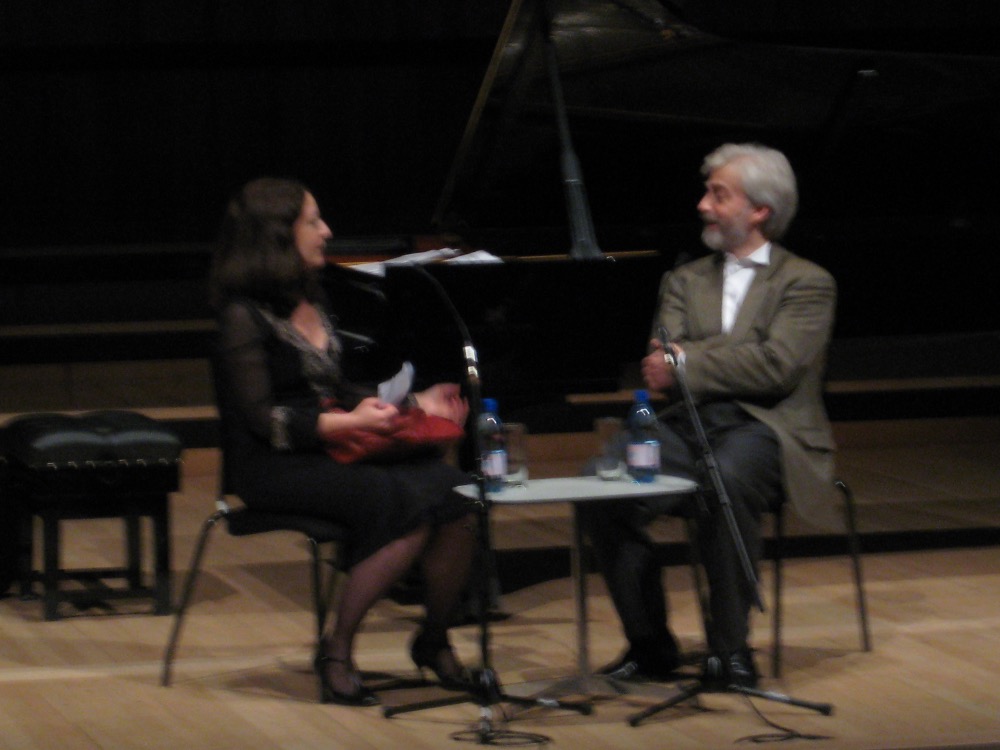Glyndebourne's favourite Strauss opera, Ariadne auf Naxos, is back and open, with a strengthened revival and an intriguing new cast including Lise Davidsen, Angela Brower, Erin Morley and AJ Glueckert. When the production was first staged in 2013 I went to visit the archivist and the director to interview them for The Independent, so it seems an apposite moment to re-run a select part of that feature. Don't miss the story of Rudolf Bing and the potties.
An English country house; a rarified ivory tower in which to explore high art; the performance of tragedy and comedy alike; dinner al fresco; and that’s just on stage... Glyndebourne is back with Richard Strauss’s Ariadne auf Naxos and its first half concerns precisely such a situation. Nevertheless the concept dreamed up for it by the German director Katharina Thoma feels close to home for another reason. It was inspired by the World War II transformation of Glyndebourne itself into a centre for evacuees from east London.
 |
| Angela Brower as the Composer |
Glyndebourne’s archivist, Julia Aries, explains that the
estate manager had seen which way the wind was blowing. “He didn’t want
Glyndebourne to be taken over by the Ministry of Defence and trashed,” she
says, “so he put it forward as an evacuee centre. Then, on the ‘false start’ of
the war, they promptly shipped 300 babies and 72 carers down here.” The estate
could not cope with such a massive influx and the story goes that Rudolf Bing,
the opera festival’s general manager, had to rush into nearby Lewes to buy up
every available potty.
Eventually the numbers settled to a third of the first rush,
and country life with play-based learning and plenty of fresh air began for
Glyndebourne’s new inhabitants, under the direction of a matron, who, in a
somewhat unfortunate choice, termed herself the Commandant. The cook was able
to amplify food rations with rabbits from the fields and eggs from the farm;
and, supplied with drums of Klim powdered milk by some Canadian soldiers who
were billeted in nearby Firle Place, she created makeshift ice-cream to give
the little ones a treat.
 |
| Lise Davidson as Ariadne |
The opera and the family fared less well. The former ceased
to function in 1940 and the company scattered. The music director Fritz Busch
and artistic director Carl Ebert, who were both refugees from Nazi Germany,
headed respectively to Buenos Aires and Turkey; Audrey Mildmay, Lady Christie,
who was herself a well-known opera singer, took her two children to Canada for
safety. Sir John Christie stayed behind, listening to his wife’s voice on
gramophone records. He was all too aware of the irony that his house was filled
with children while his own were 3000 miles away.
Katharina Thoma, who won second prize in the European Opera
Competition Camerata Nuova in 2007, visited Glyndebourne for the first time in
spring 2009, after the company’s general manager David Pickard and music
director Vladimir Jurowski suggested that she could direct Ariadne auf Naxos there as her UK debut. The trip sowed the seeds
of an idea for the production. She has updated Ariadne’s setting to – well, an English country house in the 1940s.
 |
| AJ Glueckert as Bacchus |
“The idea of setting it in wartime came about because I felt
that in the music there were more existential issues to worry over than the protagonists
in the Prologue actually do,” says Thoma. “If you listen to the end of the Prologue,
when everything breaks down, it sounds like a major catastrophe.”
Therefore, instead of serving as an opera-within-an-opera,
the second part offers a continuity of narrative. The Composer, injured,
observes the depressed and suicidal Ariadne from his hospital bed, the house
having been transformed not into an evacuee centre but into a hospital treating
the wounded from the Battle of Britain. “Observing her, trying to help her, and
seeing what happens to her and Bacchus, he experiences a maturing process that
leaves him better able to cope with the real world outside his ivory tower,”
Thoma suggests.
The Ariadne set
designs by Julia Müer are based generically on English country houses of that
time, but the closeness to Glyndebourne will probably be self-evident. Thoma
arrived there in April and has been staying in the house, as the creative team
usually does during rehearsals. “Every morning I wake up and think I am on the
set of my opera,” she remarks.
Learning about Glyndebourne’s fortunes during the war, Thoma
says she was impressed by the way that in Britain “turning a manor house into a
hospital was a typical thing, because people needed each other and held
together”. It might seem risky for a German director to choose a wartime theme
for her first UK production, but Thoma’s generation can perhaps take a new
perspective on those years. “For me it was fascinating to see how British
people have dealt with the subject in the past and still do,” she says. “They
seem very open and positive.” [NB This article first appeared in 2013. Events since then may now convey a rather different impression. jd.]
She viewed a documentary in which individuals who
were in their twenties during the war described it as the happiest time of
their lives: “That seemed astonishing to me, but I think it must in certain
ways have been a great experience to go through this endurance, because they
shared their hope and their strength and they overcame it together.”
...If this Ariadne
auf Naxos highlights the atmosphere of changing times, perhaps that is no
coincidence...
This is part of an article that first appeared in The Independent in 2013
Ariadne auf Naxos,Glyndebourne Festival Opera, on now. Box office: 01273 813813



























